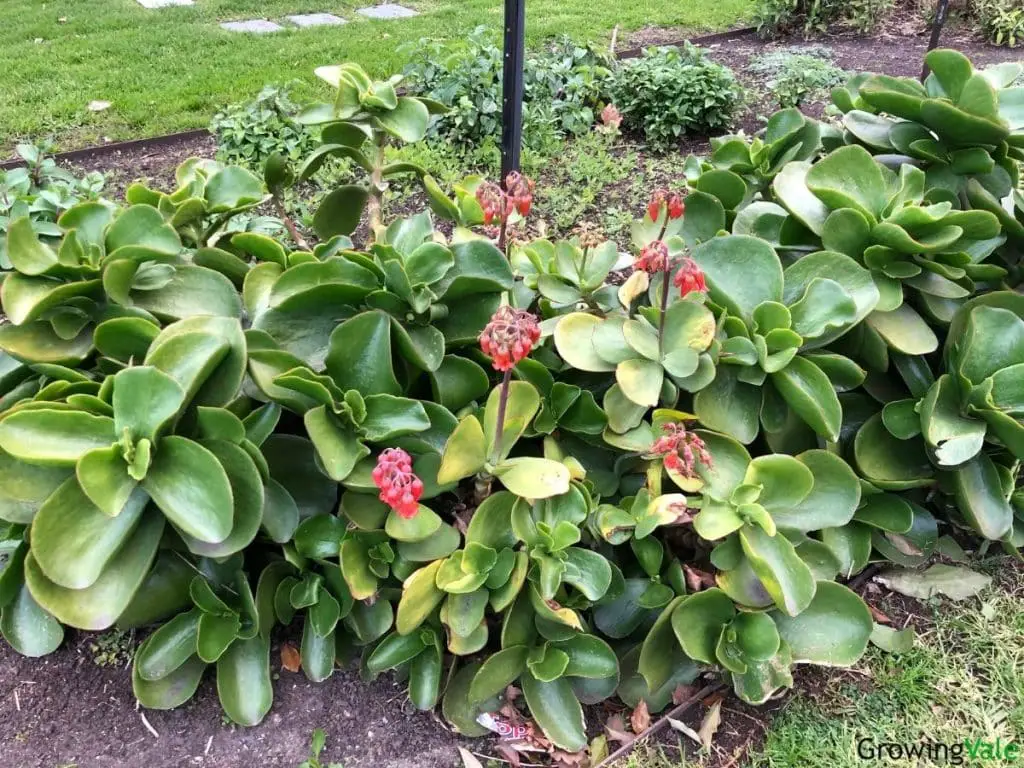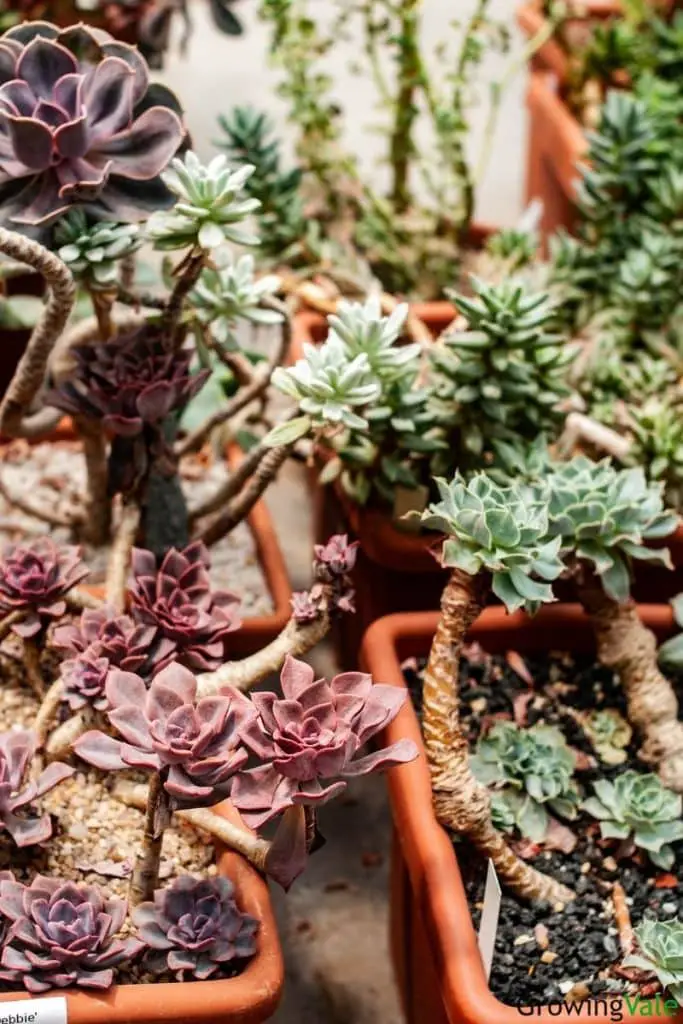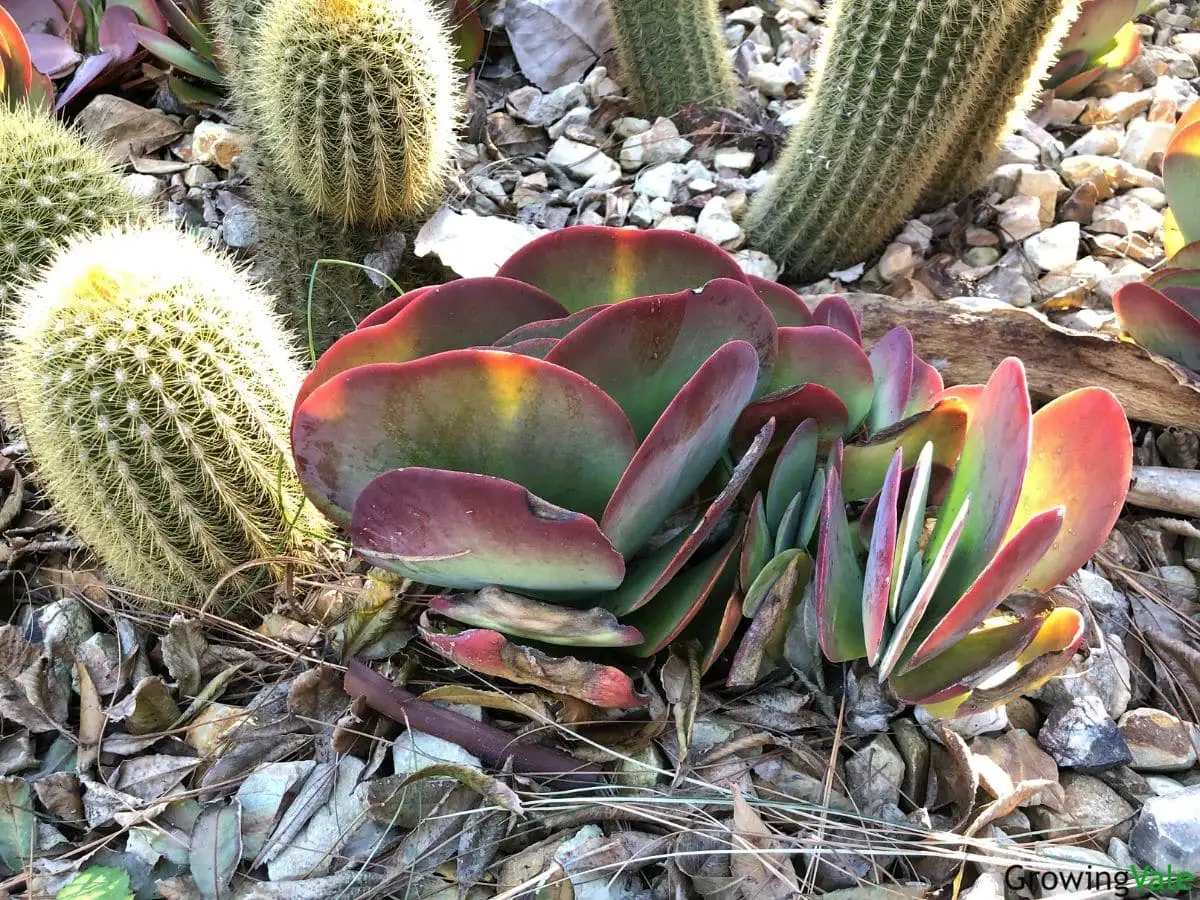It’s no secret that succulents have become extremely popular in recent years, mostly as easy-care indoor plants that add a touch of greenery to your living spaces. There are even succulent enthusiasts who have become avid collectors of all types of succulent plants.
So, What Are Succulent Plants?
In a nutshell, succulents are plants that have fleshy stems or leaves that hold moisture. This has allowed them to survive and thrive in some very harsh climates such as arid desert regions. Therefore, most succulents are drought-tolerant.
There are many different succulent varieties to choose from, so it’s important that you select ones that will thrive in the environment that you intend to grow them in. Many species are small-growing and these are ideal for placing on your desk or a bright windowsill in your home.
There are also suitable succulent varieties for hanging baskets as they gracefully trail over the edges and some that can grow to form large trees. Obviously, the larger-growing varieties are more suitable for growing outdoors so that they can have the space that they need.
But, no matter whether you want to grow some small succulents indoors or you have a large outdoor cacti garden, there are species of succulents that will fit right into your lifestyle.
History
The name “succulent” comes from the Latin word “sucus”. This means sap or juice. Therefore, succulents are named this because of the way that their leaves and stems store moisture when rainfall is scarce.
Most succulents were originally native to northern Europe and the Far East while cacti (which are also succulents) were only native to the American continents. Interestingly, Christopher Columbus was one of the first explorers in the 15th century who found some cacti and took them to Europe. He presented these specimens to Queen Isabella of Spain.
As the exploration of the different parts of the world continued, more and more explorers and botanists discovered different species of succulents and shipped them to other parts of the world.
Unfortunately, in more recent years, this has led to poaching and many succulents and cacti are now endangered in their native territories. Thankfully, succulent cultivation is now a thriving business and this will ensure the continuation of many of the different species.

How to Plant and Grow Succulents
Succulents are easy to grow and many people prefer to grow them in pots indoors. Many of them thrive on neglect and can actually be killed with kindness. This is because succulents have an aversion to being overwatered and prefer to dry out before they receive additional water.
Choosing the right container for your succulent depends on the size of the plant and its growth habit. Most succulents only need a container that is large enough to accommodate their roots. In fact, many don’t mind being a little pot-bound.
Succulents are also perfect for growing in terracotta pots because these pots will allow the soil to dry out and ensure that the soil doesn’t become waterlogged. It’s really important to note that any pot that you select for your succulent should have ample drainage holes for any excess water to drain away.
In saying that, some growers have been successful in growing succulents in terrariums or glass containers. However, if you’re a beginner, stick to a pot with a drainage hole until you’re very familiar with the water requirements of succulent plants.
How to Propagate Succulents
Most succulents are easily propagated using leaf cuttings or offsets. Offsets are little baby plants that grow from the base of the parent plant. Whether you use offsets or healthy leaf cuttings, the succulent propagation method is the same for propagating these plants.
- With a sharp knife either cut off some healthy leaves close to the stem of the plant or carefully remove an offset from the base of the mother plant.
- Leave these cuttings in a dry spot for a number of days. This allows the cut end to dry and a callus will form.
- Once this has happened, fill a small pot or seedling tray with some specially formulated succulent mix.
- Plant succulents or their leaves or offsets into the mix and moisten the soil.
- Continue to keep the soil moist until you start to see some new growth.
- Once this happens, you can pot your rooted cuttings into their own container and care for them in the same way that you care for the parent plant.

General Succulent Care and Maintenance
Caring for succulents is very easy as long as you don’t overwater them. In fact, many species will simply thrive on neglect.
Here are some helpful tips on how to care for succulents:
Soil
Indoor succulents need an open, airy soil that is well-draining. Specially formulated succulent or cacti mix is readily available from garden centers and nurseries. This potting soil mix is usually a combination of peat moss or coco coir, coarse sand, and perlite. Some mixes may also have composted bark in them. This ensures that the water can drain away quickly as soon as the plant is watered.
If you want to grow your succulents outdoors, you need to plant them in sandy soil that has excellent drainage. Most succulents won’t handle heavy, clay soils too well as these tend to hold too much moisture.
Water
Learning how to water your succulent correctly is the most important step in ensuring its survival. You see, succulents should never sit in water as this can cause their roots to rot. If this happens, then there’s not much you can do to save the plant. Let the soil dry before watering again to avoid root rot.
A fool-proof way to water succulents is to use the “soak and dry” method. For this method, you need to wait for the soil to dry out completely. You can either check the soil with your finger or use a moisture meter. Once the soil is dry, give the plant a good soaking at the soil level and ensure that any excess water can flow freely from the bottom of the pot.
Once no more water is coming out of the drainage holes, you can put the plant back in its normal spot. Don’t even consider giving the plant more water until the soil has dried out completely again.
Fertilizer
In general, succulents aren’t heavy feeders but they will benefit from a liquid feed during their growing season. For many species, this is in the spring and summer. Make sure that you mix up the liquid fertilizer at half strength only and feed the plant when it next needs some water.
Another thing you can do is just use some slow-release fertilizer that you add to the potting mix. This type of fertilizer releases nutrients slowly if and when the plant needs them. Generally, you only need to fertilize succulents once a year.
Sunlight
Most succulents thrive in at least 5-6 hours of sunlight a day. This is why many people like to grow their succulents on a bright windowsill where the plant will receive plenty of light, especially in the morning.
It’s best not to expose your plants to the harsh afternoon sun as this could easily burn the plants if they’re used to living indoors.
On the other hand, if you are growing your succulents outdoors, you will notice that they will change color when they’re exposed to direct sunlight. This is perfectly normal and it’s how these plants have adapted to some of the harsh environments and especially when exposing to full sun that they naturally grow in.
Temperature and Humidity
In general, succulents are not cold-tolerant and prefer to live in warm conditions. That’s why many people grow them indoors where the temperature is more regulated. There are some species that can tolerate a little frost but most prefer warm temperatures and not a lot of humidity.
Pruning
Most succulent varieties only require a prune if they start to get a little leggy or their growth becomes a bit unruly. You can then use some of the leaves and stems that you’ve cut back to propagate new plants.
Pest and diseases
Succulents are generally quite pest-resistant. However, they can succumb to an attack by common houseplant pests such as mealybugs, spider mites, and aphids. It’s easy to remove these pests by dipping a cotton swab into alcohol and dabbing this onto the pests. If the infestation is severe, you can easily spray your plant with a mixture of water and insecticidal soap or neem oil.
The only other problem that you might face with succulents is fungal diseases such as root rot. However, if you don’t overwater your plants, you won’t have this problem. On the other hand, if your plant has succumbed to root rot, there’s nothing you can do to save it. In this case, it’s best to remove any healthy leaves that still remain on the plant and propagate these to make new plants.
Uses of Succulents
Many succulents are simply grown for their ornamental value. However, there are also many species that can have either medicinal uses or that have fruits that are edible.
For example, the sap from aloe vera leaves is useful for treating sunburn while the fruits from the prickly pear cactus and the Pitaya succulent are totally edible and delicious.
Conclusion
Succulents are popular houseplants that have gained a huge following from indoor plant growers and gardeners alike. These delightful plants are easy to grow and require minimal care, especially with just enought light (about six hours) and watering. They come in all sorts of shapes and sizes and make the perfect indoor plants to add some joy to their owners.
We hope you’ve learned the basics of how to take care of succulents in this guide. Feel free to explore our website for other succulents care guides.
See more: How to take care of a cactus

